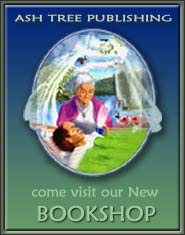Quench Your Thirst with Herbs
© 2008, Susun S Weed
Summer solstice and the longest day are past. As we slide from summer into autumn, the sun seems hotter and fiercer than ever. 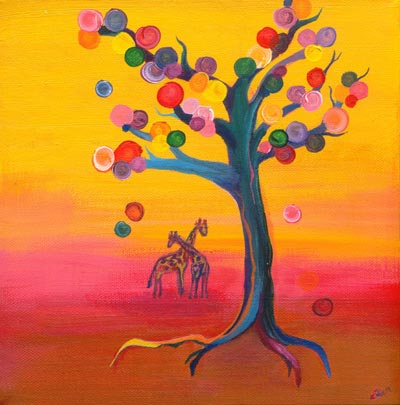 And the summer's heat makes us thirsty. What shall we drink? There are so many choices. Since 2003 the number of new drink products on the market has tripled. How are we supposed to choose the best drinks? Does it even matter?
And the summer's heat makes us thirsty. What shall we drink? There are so many choices. Since 2003 the number of new drink products on the market has tripled. How are we supposed to choose the best drinks? Does it even matter?
I think it does. The liquid portion of our diets is as important as the solid portion. That's why I drink herbal brews, nourishing herbal infusions to be exact, instead of juice or water. Some herbs are powerhouses of nourishment, energy, and health-promoting factors. By chosing those herbs as my drink, I increase the amount of protein, vitamins, minerals, and micronutrients in my diet without consuming extra calories, and at a xost of only pennies a day. I'd rather drink nourishing herbal infusions than any other beverages. I drink infusion in the morning, throughout the day, and in the evening, too.
Water is a good drink. But what water? Is water from the tap safe and healthy? Is it better to buy bottled water?
I make my nourishing herbal infusions by pouring boiling water ove dried herbs. Boiling the water removes chlorine and kills germs, so I feel safe using any water to make my infusion. I strongly prefer tap water over bottled water because I want to minimize the amount of plastic I consume. And I avoid mineral-depleted distilled water. But I only use cold water from the tap, as hot water can contain traces of plastic or lead leached from the water pipes.
Instead of making nourishing herbal infusions, I could buy vitamin- and mineral-enhanced water, maybe with some ginseng or green tea thrown in.
Bottled waters with added vitamins and herbs are big business, with more than $3 billion dollars in annual sales. Unfortunately, neither the vitamins nor the herbs in "enhanced water" have any impact on energy or health. Energy drinks do contain caffeine, and that has a strong effect. But neither the herbs nor the supplements currently added to any bottled water have been found to have any nutritional effect. These waters are considered "non-functional," that is, they are colored and flavored water, not nutrition. Worse yet, enhanced waters are sweetened, often heavily. Unfortunately, the body doesn't count the calories in what we drink, so drinking sugary beverages increases calories, and appetite, and -- you guessed it -- the size of your butt. I don't buy energy drinks, instead, I rely on stinging nettle infusion. Nettle gives me the energy of the earth: strong, solid, endless energy. Nettle infusion supplies me with enormous amounts of electrolyte minerals, lots of protein, and astonishing amounts of vitamins. And it tastes great iced on a hot day.Yum, yum.
Perhaps drinking juice is as good as drinking infusions, maybe better if the juice is fresh.
Americans bought more than $2 billion dollars worth of organic juices last year. And more than that in non-organic juices. Neither packaged nor fresh fruit juices supply much nutrition however. (With two exceptions: freshly-squeezed citrus juices and tomato juice.) Juicing doesn't liberate minerals or vitamins, just fruit sugars, flavors, and colors. Nourishing herbal infusions are superior to any juice in both mutrition and cost. Most bottled juices, no matter what they're called, are made fromhigh-fructose apple and grape juice concentrates. Sweet calories from fruit juice pile up around our waists. Instead of juice, I drink nourishing herbal infusions of linden or oatstraw. Both are slightly sweet, and taste even better with a little honey added. Linden infusion reduces inflammation and aids the heart. Oatstraw infuison provides generous amounts B vitamins, lowers cholesterol, and increases libido.
Tea has many health benefits. Surely drinking iced tea is a healthy choice for quenching summer thirst. Iced coffee sounds good, too.
All kinds of tea are healthy, and a few cups of coffee a day have been shown to decrease the incidence of some diseases. But bottled iced tea and iced coffee are heavily sweetened. Most bottled iced teas have no health benefit because they are not made from brewed tea but from tea concentrate. Iced coffee lattes add insult to injury by being rich in fat as well as too sweet. Brew tea at home and carry it, iced, in a thermos instead of buying bottled stuff. Better yet, brew yourself some red clover infusion. It tastes like black tea. Add lemon and a little mint, pour over ice, and you have a drink that is not only nearly calorie-free but alsoa tremendous source of nutrition, and a leading preventer of cancer.
After nourishing herbal infusion, my favorite summer refresher is a chocolate malt.
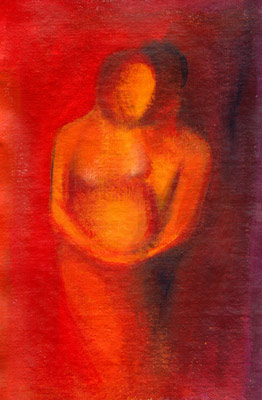 Yes, malts, especially chocolate malts, are thirst quenchers that pack a nutrition punch with no more calories than sweetened teas, enhanced waters, or fruit juices. Malt powder is an excellent source of B vitamins. Milk is Nature's way of building strong bones. And chocolate promotes heart health. Now and then, in between quarts of nourishing herbal infusion, I cool down with a nourishing chocolate malt. Umm, umm.
Yes, malts, especially chocolate malts, are thirst quenchers that pack a nutrition punch with no more calories than sweetened teas, enhanced waters, or fruit juices. Malt powder is an excellent source of B vitamins. Milk is Nature's way of building strong bones. And chocolate promotes heart health. Now and then, in between quarts of nourishing herbal infusion, I cool down with a nourishing chocolate malt. Umm, umm.
Green blessings make the best drinks.
Give nourishing herbal infusions a chance this summer -- and I water you'll still be brewing them when winter solstice rolls around.
Recipe Box
My favorite herbs for making nourishing infusions are
Stinging nettle (Urtica dioica) for lots of energy.
Red clover blossoms (Trifolium pratense) to forstall cancer.
Oatstraw (Avena sativa) to be very, very sexy.
Comfrey leaves (Smyphytum uplandica x) to help the memory.
Linden blossoms (Tillia species) to counter inflammation.
Chickweed (Stellaria media) to lose weight.
Hawthorn blossoms (Crataegus oxycantha) for older hearts.
Raspberry leaves (Rubus species) for uterine health.
To brew a nourishing herbal infusion
Place one ounce (30 grams) of dried herb by weight in a quart (liter) jar.
Fill jar to the top with boiling water.
Cap tightly and steep for at least four hours; overnight is fine.
After brewing, strain the liquid from the herbs.
Squeeze the herbs to get all the goodness out.
Refrigerate the liquid, which needs to be consumed with a day or two.
Drink your nourishing herbal infusion over ice or heated up, with honey or not.
I drink 2-4 cups of infusion a day.
You can mix nourishing herbal infusions with fruit juice or soda water; you can add whiskey or miso, honey or ginger to them, or flavor them in any way that appeals to you.

Nutritive and Tonic Herbs - 2 CD Set

Nutritive and Tonic Herbs
2 CD Set - Susun S Weed -
8th International Herb Symposium 2007 -
Length - 1 Hour/11 Minutes
$22.50
But nourishing and tonifying herbs are often overlooked in favor of more dramatic, faster-acting stimulating and sedating herbs. Can stinging nettle, oatstraw, comfrey leaf, linden flower, red clover blossoms, burdock, chickweed and dandelion really replace supplements? How come I call them nutrition powerhouses?
Price: $22.50
OrderNutritive and Tonic Herbs in our Bookshop

NEW
Sacred and Herbal Healing Beers:
The Secrets of Ancient Fermentation
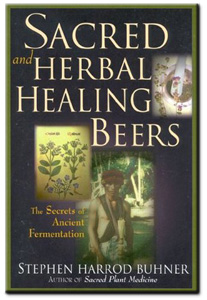 by Stephen Harrod Buhner
by Stephen Harrod Buhner
This is the first comprehensive book ever written on the sacred aspects of indigenous, historical psychotropic and herbal healing beers of the world.
Paperback: 450 pages
Price: $19.95
"Filled with nourishment for the soul, body, and mind, this book is a unique view of the intersection between herbal medicine and fermentation. It will delight anyone interests in herbs, honey, brewing and folktales. Great Book!" -- Susun S. Weed
Order Sacred and Herbal Healing Beers in our Bookshop


 Yes, malts, especially chocolate malts, are thirst quenchers that pack a nutrition punch with no more calories than sweetened teas, enhanced waters, or fruit juices. Malt powder is an excellent source of B vitamins. Milk is Nature's way of building strong bones. And chocolate promotes heart health. Now and then, in between quarts of nourishing herbal infusion, I cool down with a nourishing chocolate malt. Umm, umm.
Yes, malts, especially chocolate malts, are thirst quenchers that pack a nutrition punch with no more calories than sweetened teas, enhanced waters, or fruit juices. Malt powder is an excellent source of B vitamins. Milk is Nature's way of building strong bones. And chocolate promotes heart health. Now and then, in between quarts of nourishing herbal infusion, I cool down with a nourishing chocolate malt. Umm, umm.

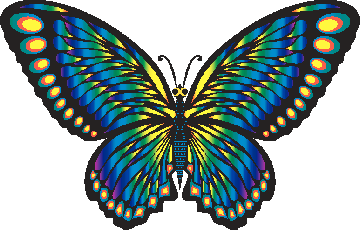 CORRESPONDENCE COURSES
CORRESPONDENCE COURSES 
